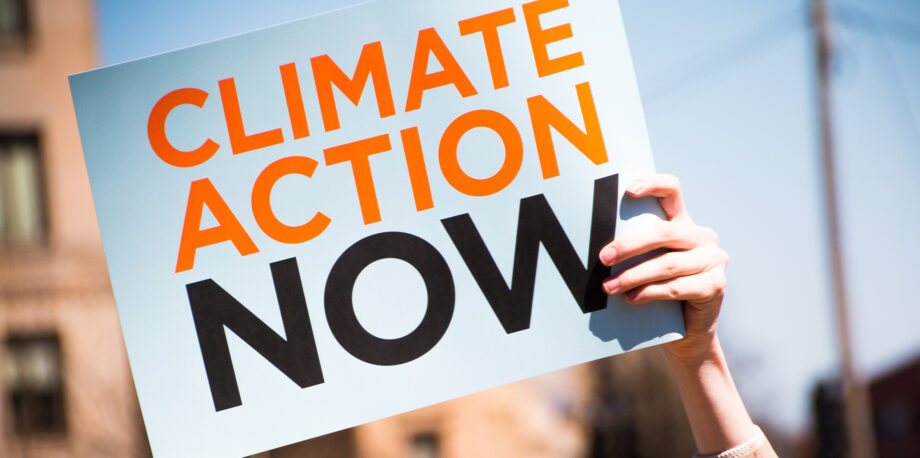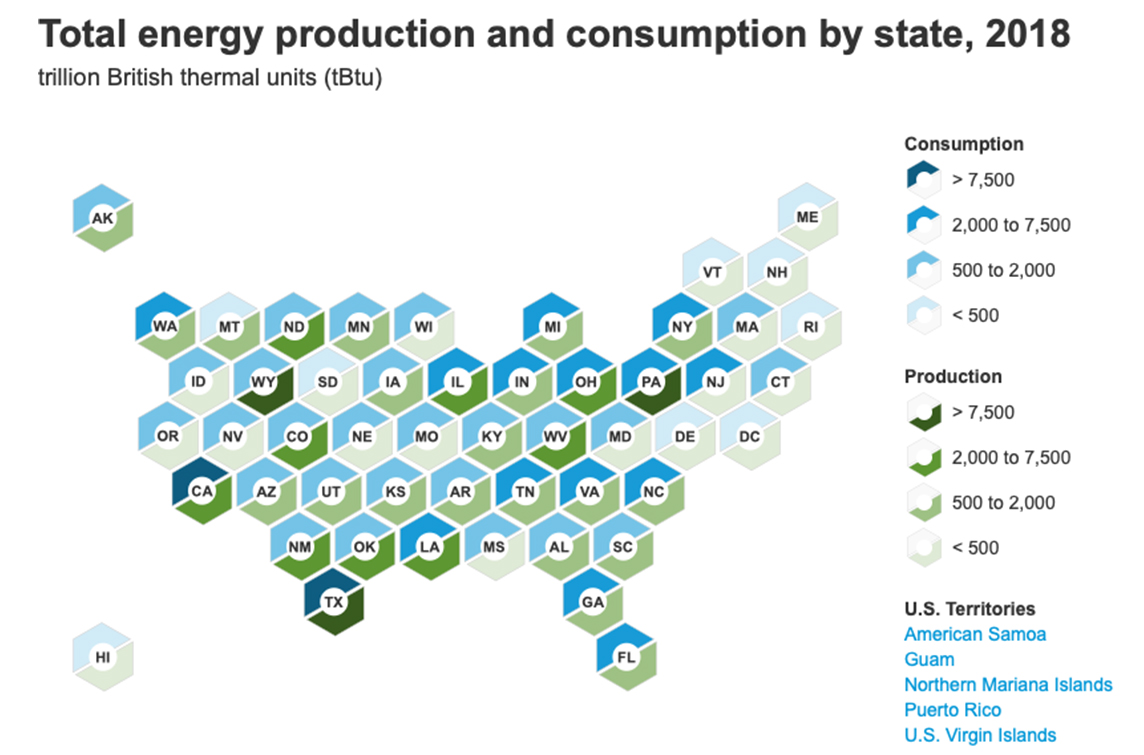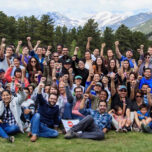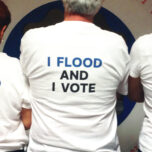August 25, 2020 — 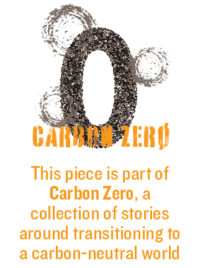 In the midst of the Covid-19 pandemic, Americans have not forgotten about climate change. In fact, our recognition of the problem is at or near all-time highs, according to research from Yale and George Mason universities. Polling data from the universities from April 2020 revealed that 61% of registered voters accept that humans are changing the climate, and most support policies like a carbon tax or a fee-and-dividend program to reduce greenhouse gas emissions.
In the midst of the Covid-19 pandemic, Americans have not forgotten about climate change. In fact, our recognition of the problem is at or near all-time highs, according to research from Yale and George Mason universities. Polling data from the universities from April 2020 revealed that 61% of registered voters accept that humans are changing the climate, and most support policies like a carbon tax or a fee-and-dividend program to reduce greenhouse gas emissions.
It’s impressive that the public commitment to act on climate change remains steadfast in the face of new challenges. But the flip side is that only 13% of registered voters have urged an elected official to address the problem. They may be primed for action, but we have yet to fully step into that role. So what’s the best way to do that?
What follows is a inexhaustive list of concrete ideas and tools individuals can use to boost civic engagement on climate change — steps that experts say can translate data like those from Yale and George Mason into meaningful progress, right now.
1. Learn where the public is already aligned with policies that address climate change
“Know thy audience,” the Yale Program on Climate Change Communication recommends, noting that public opinion is a major influence on public policy. Delving into the data, there’s strong bipartisan agreement on many elements of climate policy, especially for renewable energy. Yale, Utah State University, and the University of California, Santa Barbara, have created climate opinion maps that plot climate beliefs and energy policy preferences down to the scale of individual counties and congressional districts. The same institutions have assembled customizable fact sheets that summarize climate opinions for adults by state, county and congressional district.
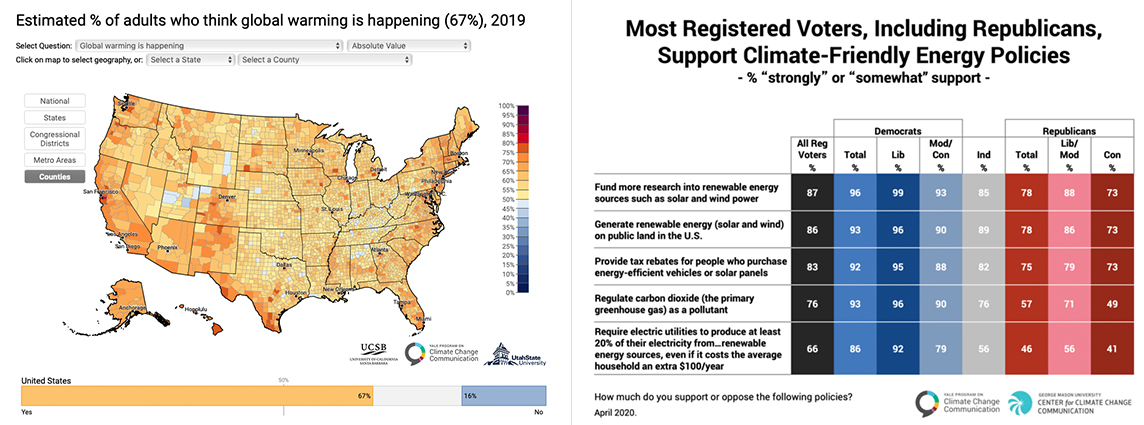
A majority of adults think global warming is happening, and most support climate-friendly energy policies. Left graphic courtesy of the Yale Program on Climate Communication, Utah State University, and the University of California, Santa Barbara. Right graphic courtesy of the Yale Program on Climate Communication and the George Mason University Center for Climate Change Communication. Click to expand.
These tools allow people to find angles that are likely to resonate within a given community. Policymakers may appreciate knowing where most of their constituents are already on board.
2. Build racial and social justice into climate solutions
Research on pollution inequity is increasingly able to quantify how Black, Indigenous, and people of color (BIPOC) bear the brunt of the pollution burden, while the people whose lifestyles cause the most pollution are shielded from its ill effects. For example, according to a 2019 study in PNAS, “Blacks and Hispanics on average bear a ‘pollution burden’ of 56% and 63% excess exposure, respectively, relative to the exposure caused by their consumption.” This imbalance likely partly explains why Hispanics/Latinos and African Americans tend to be more concerned about climate change than white people. Environmental organizations, such as Earthjustice, 350.org, Sierra Club and others, are recognizing that racial and social justice are an integral part of the push for climate solutions.
Environmental activist Leah Thomas proposes several starting points in her article, “Why Every Environmentalist Should Be Anti-Racist.” She encourages environmental advocates to “hold themselves accountable and do the inner anti-racism work to achieve both climate and social justice.” Listening and learning how environmental injustices are affecting BIPOC communities is important, writes Jocelyn L. Travis, an organizing manager for the Sierra Club: “People know what they need. They just need to be heard.” BIPOC-led organizations can be one source for solutions that help those communities specifically.
3. Dig into energy production
Science has long told us that burning fossil fuel is the primary cause of anthropogenic climate change and reducing fossil fuel use, the most potent solution to the problem. Finding out where an individual’s energy comes from is an important piece to the puzzle.
The U.S. Energy Information Administration’s state energy profiles show energy production and consumption and energy sources for electricity generation in all 50 states. Meanwhile, Stanford University professor of civil and environmental engineering Mark Jacobson has developed fact sheets about state-by-state opportunities for renewable energy.
Judy Dorsey is president and principal engineer at the Brendle Group, a consulting firm that helps communities plan climate action. She recommends that people who want to reduce their climate impact look at their energy provider’s “resource plan,” which is the mix of energy sources the company intends to use in the future. This information is usually available on the company’s website. “If the utility is municipality-owned, then there would be opportunities for public input,” she says. If the company is investor-owned, people can “look for roundtables or other ways to get involved,” Dorsey advises.
Some utilities allow an option to buy into an energy portfolio that’s greener than their general portfolio. If a utility does not offer a low-carbon electricity product, customers can ask it to do so. Corporations are greening up their energy use, too, and consumers and investors can support companies that have proven track records for purchasing renewable energy.
4. Follow the money
Public policy researchers have found connections between money in politics and inaction on curbing pollution. For example, the fossil fuel industry exerts considerable financial resources to influence elections and reward policymakers who vote against environmental policy measures. Furthermore, a look at lobbying and campaign donations in federal politics shows that the fossil fuel industry outspends the renewable energy industry by more than 13 to 1.
The financial ties of elected officials and candidates are easy to track; the Follow the Money database allows users to research state and local politicians. Similarly, the Center for Responsive Politics’ Open Secrets is a tool to explore contributions to federal campaigns and lobbying information. Here are some examples of how climate advocates can use Open Secrets:
- Learn how the oil and gas industry is spending money in national politics.
- Dig into key electoral races and see where fossil fuel funding may be tilting the balance. In the Colorado senate race, for example, the database compares the funding for Cory Gardner and John Hickenlooper, showing stark differences in fossil fuel ties.
Advocates can use such information in conversations with voters, letters to the editor and public meetings and with the public officials themselves.
5. Get to know elected officials
Brittany Webster, program manager of public affairs at the American Geophysical Union (AGU), credits public engagement for “forward movement” of climate policy in Congress. Webster says the arena for climate change has shifted from debating the science to exploring what to do about it. But still, “they’re not talking enough about solutions,” she says.
Webster advises people to “look at the consequences and impacts to your community.” For people in Florida, for example, climate change is “literally seeping into their back yard,” she says. Taking a local focus and carrying it forward to lawmakers is “how you start the conversation,” says Webster.
Cities are increasingly making bold plans for climate action. “Many cities have an energy and climate task force,” says Dorsey. “Look to see if your city has a climate and energy plan, and ask about joining their volunteer advisory board.” Climate change can be part of planning for development, transportation, utilities, food systems and water resources in every community. Currently, given the global pandemic, some city meetings are being conducted online, making attendance easier for some.
If a particular city has not yet begun climate planning, nearby localities may have, giving examples and strategies that could work elsewhere. The Wisconsin Clean Energy Toolkit contains resources for communities seeking to transition to renewables.
“Raising your voice” is another strategy, said Andrew Valainis, executive director of the Montana Renewable Energy Association, in a recent policy webinar. “Advocates are really important,” he said. “If you’re not up there raising your voice, then all the legislators hear is the opposite opinion.” Groups like Citizens’ Climate Lobby or regional advocacy organizations offer opportunities for people to get involved.
Local environmental groups track state and local politics and send alerts when action is needed, such as those around key bills, opportunities for hearings or public service commission meetings where people can share their ideas. It might seem like one voice is too small to matter, but, Valainis said in the webinar, “It’s really important. It makes a big difference.”
At the national level, Webster advises that constituents call their senators’ and representatives’ D.C. offices instead of the local office to connect. “Identify yourself as a constituent,” she says, and ask for the email address of the staffer working on the issue you want to discuss. Then write to the staffer and ask to set up a phone call. “You’re working to build a relationship,” Webster says. Advocates can use the first meeting to share their story about why tackling climate change matters, using a local angle when possible. Webster suggests asking for support of specific measures because a concrete and tangible “ask” is likely easier to act on than an open-ended request.
AGU offers advice about how to effectively talk to policymakers.
6. Hit the campaign trail
Voting for candidates who will aggressively pursue climate policy is one way to bring about change, but involvement can go further than that. Campaigns all around the country look for people to help with phone and text banking, organizing, and getting out the vote. “If you don’t help, who will,” writes Larry Walker, an educational consultant who works with historically Black colleges and universities, in an article detailing the benefits of campaign volunteering. Interested individuals can find their local campaign office or join national groups like the Environmental Voter Project.
Related Posts
Ensia shares solutions-focused stories free of charge through our online magazine and partner media. That means audiences around the world have ready access to stories that can — and do — help them shape a better future. If you value our work, please show your support today.
Yes, I'll support Ensia!